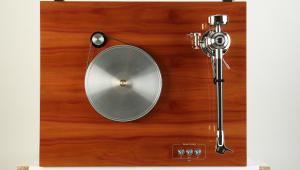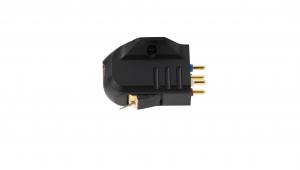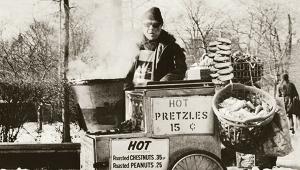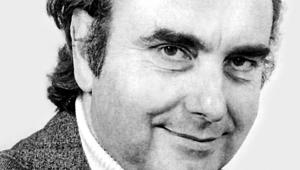Benz Micro Mc Lp S (£2490)
One of those recurring fallacies is that a hi-fi component should be like a musical instrument. Really, it should be something quite the opposite. An instrument amplifies the vibration of a string, for example, adding its own tonal character in the form of complex harmonics. A hi-fi component, by contrast, is not supposed to add its own character, but is meant to reproduce the signal that it receives, without adding or taking anything away.
ART OF ENGINEERING
So it might seem that using wood rather than metal for the body of a cartridge smacks of art rather than engineering. But a long line of classic moving-coils, from the Koetsu Rosewood and the Goldbug Briar onwards, seems to show that the end justifies the means.
Benz Micro, surely one of the most scientific high-end cartridge makers, has had wood-bodied models at the top of its range for years, recently adding the MC LP-S auditioned here.
Open underneath, the ebony body of the LP-S actually clothes a very strong brass frame, which makes the cartridge quite heavy at 16.4g. In the generator itself, the tiny moving coils are wound on a square ruby plate, while the cantilever is a solid boron rod, 0.28mm in diameter. The stylus is a Fritz Geiger S line-contact type, with tip radii of 5 x 20microns, mirror polished. Tracking force range is 1.8 to 2.2g, the importer suggesting 1.9g as optimum. Armed with this last snippet of information, I set about the enjoyable task of putting the LP-S through its paces.
PICTURE PERFECT
Dire Straits [Polydor 9102 021] from 1978 is one of those records that can sound great on a transistor radio and rather awful on a mediocre hi-fi system. ‘Sultans of Swing’ can become messy and cluttered, but with the Benz Micro everything fell into place with tremendous clarity.
Knopfler’s gruff vocal came over with force, and fine intelligibility too, and you could appreciate his original singing voice alongside the fabulous guitar sound. Meanwhile the accompaniment rocked along with gratifying gusto without muddying the sonic picture, as can so often happen. I amused myself trying to penetrate the mysteries of Muff Winwood’s production, the subtle edits, the background vocals when ‘the Sultans play Creole’, and the rest of it.
Another eponymous mega-seller from ten years later, Tracy Chapman [Elektra 960 774-1] clearly showed the Benz’s ability to keep everything in proportion, revealing the space in a recording and allowing a voice to project with maximum meaning and emotion.
In Chapman’s first hit, ‘Fast Car’, the contrast between the delicate little riff of the verse and the powerful chords of the bridge was made more effective than ever, as the Benz delivered smoothly all the way through.
After working my way through most of the usual guitar heroes, I ended up with Stevie Ray Vaughan and the inevitable ‘Tin Pan Alley’ [from Texas Flood, PPAN 38734]. Bass drums, guitar and voice were all powerful, upfront and crystal clear, while the sense of space around them – actually an extremely artful combination of real space and judicious use of added studio reverb – was wonderfully conveyed too. SRV’s electric guitar snaked and glistened like a living, breathing animal.
On the old audiophile touchstone ‘Ballad Of The Runaway Horse’ from Rob Wasserman’s Duets [GRP 97 121], Jennifer Warnes’ voice had an extra level of sweetness, especially arresting at those moments where she lowers her voice to a kind of stage whisper. At the same time there was exquisite realism in the subtle ambience around it. Rather than a vague sort of space around the singer, you could begin to sense the size of the studio. The bass was big and steady, tuneful and with a solid presence. Also well revealed was Wasserman’s gentle mandolin-effect strumming.
I’m sure that the great veteran bandleader Harry James didn’t know much about the twilight world of the audiophile when he took his band into a church to record for Sheffield Lab in 1976. But The King James Version [Sheffield Lab-3] has endured because unlike most direct-cut recordings this one captured a working band of superb quality just doing what it always did.
Listening to the LP with the Benz MC LP-S made me think about this because it certainly made the record come alive. The brass section work was spine-tingling, individual parts easy to hear in the blend as if each instrument was sharp-edged and clear, never congested, and the leader’s solo trumpet had a truly lifelike crackle about it. Above all, the drums were arrestingly dynamic and fast. This was not a band trying to get to the end of an LP side without making a mistake. It was a band that really played, and really swung.
Then I turned to (arguably) Oscar Peterson’s greatest trio, with Ray Brown and Ed Thigpen, and We Get Requests [Verve 810 047-1] from 1964. In the unlikely event you get bored with Peterson’s sparkling piano, you can just soak up Ray Brown’s bass, superbly recorded here. Or at least you could with the Benz, which I think presented the string bass almost flawlessly, with just the right weight, the wonderful tone that Brown produces blossoming forth. His high register work on ‘Days Of Wine And Roses’ was simply exquisite.
To sample the same trio sounding completely different in 1975, I spun up Action: Oscar Peterson Vol 1 [MPS 68.073], where Brown and Thigpen unfortunately are not captured so well, but Peterson’s majesty can be heard in all his glory.
IMPRESSIVELY DYNAMIC
So far, in trying to describe the sound of the Benz LP-S, I’ve managed to avoid the overworked word ‘transparent’. But in the end that is just what this cartridge seems to be.
Switch to a Koetsu, for example, and you may well hear a sound that is more palpably energetic, more upfront if you like, with sharper edges and weightier bass. On the other hand, wood body and all, the Benz can just get right out of the way of the music.
Whenever the Benz sounded impressively dynamic, or delightfully sweet and delicate, it always seemed to be the musicians that were responsible, not the replay system. This, surely, is the way it ought to be.
VERDICT
There are many alluring MCs on the market, but the Benz LP-S manages a particularly fine balance of virtues. Its high mass will demand an extra heavy counterweight on some arms, but it is unfussy when it comes to setup and loading. Neutral and delightfully revealing of detail, it sounds really dynamic and has great stereo imaging abilities. And it does all this with a refinement and sheer beauty of sound that is rare at any price.
Originally published in the August 2009 issue























































